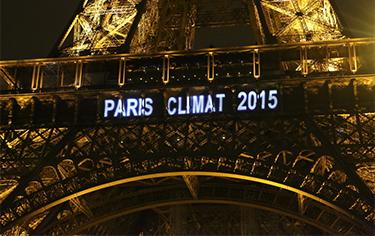The Road to Paris: Look beneath the surface for the new climate politics

World leaders gather in Paris this week for the opening of the 21st Conference of Parties (COP21) to the UNFCCC. Robert Falkner writes that, beneath the surface of diplomatic wrangling, new drivers of global climate policy are making themselves heard.
As the United Nations climate conference opens in Paris, all eyes are on the diplomats and regulatory experts trying to reach agreement on a new climate treaty. This is a historic opportunity to reach a diplomatic solution on how to fight global warming.
The conference will bring thousands of delegates to Paris, and more than 130 world leaders – including Barack Obama, Xi Jinping, Narendra Modi and David Cameron – are expected to attend. Unusually for such conferences, world leaders will attend at the start (rather than at the end) of the conference, in an attempt to build momentum for a serious deal.
Still marked by the scars of the failed Copenhagen climate summit, negotiators have cautioned against exuberant optimism this time around. However, unlike in 2009, real progress has been made ahead of the conference. Over 160 countries have submitted their pledges – or Intended Nationally Determined Contributions (INDCs).
It is clear from analysis that these voluntary pledges, even if they are fully realised, are not enough to avoid dangerous global warming of more than 20C above pre-industrial levels. But the INDCs do signal a renewed sense of responsibility and commitment to making international climate policy work.
The task for negotiators will be to build on the INDCs and create the conditions to pressure states to raise their ambition for future climate measures. This will involve creating a process by which national pledges are reviewed and ‘ratcheted up’ every five years or so. It should include a mechanism for monitoring and verifying national emissions. And it should result in a deal whereby developed and developing countries invest in tackling climate change together.
The negotiations won’t be easy, but an agreement is within reach.
Beneath the surface
Besides the draft texts that diplomats will work on, there will be another, equally important dimension to global climate policy on show in Paris. A myriad of non-state actors – from scientists to activists, local government representatives and business leaders – will be in town.
They will lobby governments for (or against) greater diplomatic ambition. Some will also debate how they themselves can take action to avert a climate catastrophe. This is what I call the subterranean politics of climate change.
The importance of these unconventional actors on the diplomatic stage is now widely recognized. The French presidency of COP21 has declared non-state climate actions to be one of the key pillars of the expected Paris deal. At last year’s COP20, the Non-state Actor Zone for Climate Action (NAZCA) was established to register voluntary initiatives, and the Lima-Paris Action Agenda (LPAA) was launched to encourage non-state actors to make their own contribution. As of today, more than 8500 commitments have been registered from more than 1600 cities, 120 regions and nearly 2000 companies.
However important these actions are, voluntary efforts by business and local authorities will not solve the climate problem on their own. They can only be part of a bigger collective effort and states will continue to set the policy agenda. But any deal reached in Paris will need to be implemented on the ground, by a myriad of actors that ultimately decide whether an agreement is worth the paper it is written on. This is why the new subterranean politics of climate change matters.
More systematic engagement
Can anything be done to encourage the more systematic engagement of nonstate actors and to make their contributions more effective? A new paper produced by a research team at the London School of Economics (LSE) and the German Development Institute (DIE) offers early insights into how successful such orchestration has been.
Over 50 climate actions, launched at the 2014 UN Climate Summit in New York, are surveyed in this report, and they involve a wide range of actors around the world. Only a year after their launch, the majority of actors have set clear targets, and most have taken steps to implement their commitments. Compared to previous initiatives, the climate actions of 2014 show a much better fit between the outputs they produce and the functions they are meant to serve. This suggests both a greater commitment by the actors involved and more successful orchestration by the UN.
There are important differences, however, between different action areas from the 2014 summit. Energy and industry-focused actions are well established and are generally on track to deliver. In contrast, most actions on resilience and agriculture have yet to produce specific outputs, though it should be noted that these are relatively new areas for climate actions, so they are bound to take longer to be fully established.
So can the new subterranean politics live up to its promise? It is far too early to tell. But the Paris summit could establish an important process for encouraging, monitoring and ratcheting up climate actions by non-state actors. If COP21 achieves this, then it can be counted as a success from where I’m standing.

